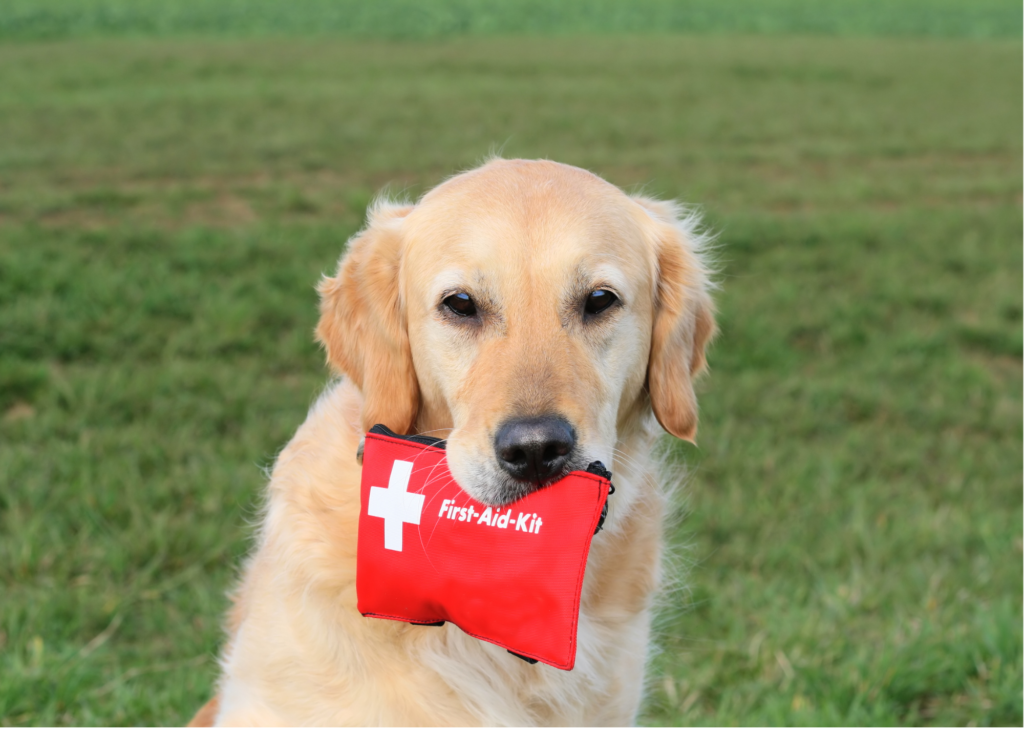
Accidents can happen in a matter of seconds when it comes to our four-legged friends. As a dog owner, it is important to be prepared for any emergency that may arise with your furry friend. One way to do this is by knowing some basic dog first aid techniques that can help you stabilize your dog until you are able to seek veterinary care. Knowing how to handle specific situations like bleeding, choking, and poisoning can also be lifesaving. Here are some dog first-aid tips and must-haves that every dog owner should know:
The Basics
Just like for humans, having a dog first aid kit handy can provide numerous benefits for pet owners! First and foremost, it can help ensure that the pet receives immediate care in the event of an injury or accident because just like humans, dogs can experience cuts, burns, and other injuries, and it's essential to have the necessary supplies on hand to treat them quickly. With a dog first aid kit, you can provide initial care and potentially prevent further complications or infection for your furry friends while trying to seek veterinary care.
Another benefit of having a dog first aid kit is the peace of mind it can bring you. Knowing that you have the necessary supplies readily available can alleviate the stress and anxiety that comes with the responsibility of caring for a pet. Having an all-in-one dog first aid kit can also be super helpful when traveling or exploring the outdoors with your furry friend! Or for convenience they do sell human and pet first aid kits all in one! Check out this one from REI!
Accidents can happen anywhere and having a portable kit with you can ensure that your pet is taken care of no matter where you are. The Bow Ow Dog First Aid Kit is a convenient premade kit that contains all of the essentials needed to stabilize your pup, in a water-resistant case. You can also build your own kit with the items you feel will be the most needed and appropriate for you and your pup's lives, such as:
- Absorbent gauze pads
- Styptic powder or pen (to stop bleeding)
- Adhesive tape
- Cotton balls or swabs
- Disposable gloves
- & More
See the complete list of suggested items to include in a dog first aid kit from the ASPCA: https://www.aspcapro.org/resource/how-make-pet-first-aid-kit
It’s important to regularly check for expired items or low stock in your pet first aid kit just as you would your own medications!
Nail Bleeding
Dog kwik stop is an incredibly handy supply to have on hand. When trimming your dog's nails they might pull away and move, causing you to accidentally cut their kwik and induce bleeding. When you are out on rough terrain or an area with hazards for scrapes & cuts, kwik stop (aka Styptic powder) can come in handy to stop the bleeding
Miracle Care Kwik Stop is an affordable styptic powder at an affordable price.
Injury Bleeding
If your dog is bleeding, it is important to determine the source of the injury and stop the bleeding as soon as possible.
If the bleeding is not caused by an impaled object, apply pressure to the wound using a clean cloth or bandage. If the bleeding is severe, apply a tourniquet above the wound, but only for a short period of time until you can get your dog to a veterinarian. It’s important to keep the affected area as clean as possible to avoid any potential infection.
Choking
If your dog is choking and having difficulty breathing, you can try performing the Heimlich maneuver to dislodge the obstruction while arranging for veterinary care. However, if your dog has a foreign object in their throat but is still able to breathe normally, it's best to avoid trying to remove the object yourself while you quickly seek professional help, as this can lead to more problems.
Poisoning
If you suspect that your dog has consumed a toxic substance, it's crucial to seek veterinary care right away. Refrain from inducing vomiting unless specifically instructed to do so by a veterinarian, as this can sometimes make the situation worse. It's also a good idea to keep the contact information for the ASPCA Poison Control Center readily available in case of an emergency. You can reach them at (888) 426-4435. Keep this number in your phone or in your First Aid Kit for quick reference. Remember, quick action can be the difference between life and death when it comes to poisoning in dogs, so it's important to act swiftly and responsibly.
In conclusion, knowing basic dog first aid techniques, and keeping your veterinarian's phone number quickly accessible, can help you quickly and effectively respond to any emergency situation with your furry friend. These tips can help stabilize your dog and increase their chances of recovery while you seek veterinary care. Remember to always stay calm and act quickly when responding to a pet emergency!